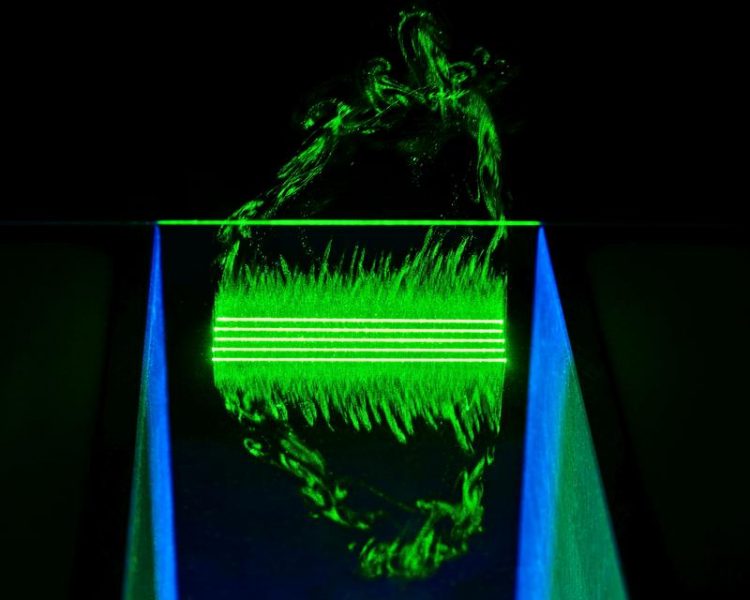High Resolution Laser Structuring of Thin Films at LOPEC 2017

Laser ablation of ITO on flexible PET substrate. Fraunhofer ILT, Aachen, Germany
The requirements for competitive process engineering for producing organic electronics are high: structure sizes below 10 µm, high speeds with ablation rates of several mm2/min and applicability to several m2. Researchers from Fraunhofer ILT investigate laser based processes for flexible micro structuring of thin films.
Through the laser complex structures can be fabricated at high surface rates. Customized wavelengths and pulse durations enable the use of specific optical characteristics of organic and inorganic materials.
Even at high speeds the laser precisely structures thin films with the developed processes. Compared to conventional processes various approaches to beam guiding and shaping improve resolution and productivity significantly.
Our experts are looking forward to give you more details about this topic at LOPEC 2017.
Contact
Dipl.-Ing. Christian Hördemann
Group Micro and Nano Structuring
Phone +49 241 8906-8013
christian.hoerdemann@ilt.fraunhofer.de
Ludwig Pongratz M.Sc.
Group Micro and Nano Structuring
Phone +49 241 8906-8044
ludwig.pongratz@ilt.fraunhofer.de
Media Contact
All latest news from the category: Trade Fair News
Newest articles

Silicon Carbide Innovation Alliance to drive industrial-scale semiconductor work
Known for its ability to withstand extreme environments and high voltages, silicon carbide (SiC) is a semiconducting material made up of silicon and carbon atoms arranged into crystals that is…

New SPECT/CT technique shows impressive biomarker identification
…offers increased access for prostate cancer patients. A novel SPECT/CT acquisition method can accurately detect radiopharmaceutical biodistribution in a convenient manner for prostate cancer patients, opening the door for more…

How 3D printers can give robots a soft touch
Soft skin coverings and touch sensors have emerged as a promising feature for robots that are both safer and more intuitive for human interaction, but they are expensive and difficult…





















